Bedienungsanleitung Hikoki C 9U3 Kreissäge
Benötigen Sie ein Bedienungsanleitung für Ihren Hikoki C 9U3 Kreissäge? Unten können Sie das PDF-Bedienungsanleitung kostenlos auf Deutsch ansehen und herunterladen. Für dieses Produkt gibt es derzeit 3 häufig gestellte Fragen, 0 Kommentare und 2 Stimmen mit einer durchschnittlichen Produktbewertung von 100/100. Wenn dies nicht das von Ihnen gewünschte Bedienungsanleitung ist, kontaktieren Sie uns bitte.
Ist Ihr Produkt defekt und bietet die Bedienungsanleitung keine Lösung? Gehen Sie zu einem Repair Café, wo es gratis repariert wird.
Bedienungsanleitung
Loading…

Loading…
Bewertung
Teilen Sie uns mit, was Sie über die Hikoki C 9U3 Kreissäge denken, indem Sie eine Produktbewertung verfassen. Möchten Sie Ihre Erfahrungen mit diesem Produkt teilen oder eine Frage stellen? Hinterlassen Sie einen Kommentar am Ende dieser Seite!Mehr zu diesem Bedienungsanleitung
Wir verstehen, dass es schön ist, ein gedrucktes Bedienungsanleitung für Ihr Hikoki C 9U3 Kreissäge zu haben. Sie können das Bedienungsanleitung jederzeit von unserer Website herunterladen und selbst ausdrucken. Wenn Sie ein Originalhandbuch wünschen, empfehlen wir Ihnen, Hikoki zu kontaktieren. Möglicherweise können sie ein Originalhandbuch bereitstellen. Suchen Sie das Bedienungsanleitung Ihres Hikoki C 9U3 Kreissäge in einer anderen Sprache? Wählen Sie auf unserer Homepage Ihre bevorzugte Sprache und suchen Sie nach der Modellnummer, um zu sehen, ob wir sie verfügbar haben.
Spezifikationen
| Marke | Hikoki |
| Modell | C 9U3 |
| Kategorie | Kreissägen |
| Dateityp | |
| Dateigröße | 12.81 MB |
Alle Anleitungen für Hikoki Kreissägen
Weitere Anleitungen von Kreissägen
Häufig gestellte Fragen zu Hikoki C 9U3 Kreissäge
Unser Support-Team sucht nach nützlichen Produktinformationen und beantwortet Ihre häufig gestellten Fragen. Sollte Ihnen ein Fehler bei den häufig gestellten Fragen auffallen, teilen Sie uns dies bitte anhand unseres Kontaktformulars mit.
Wie viele Millimeter sollte die Säge unter dem Material, das ich säge, hervorragen? Verifiziert
Es ist am besten, mindestens 3 mm hervorragen zu lassen. Wenn es weniger ist, besteht die Möglichkeit, dass das Material bröckelt oder das Ergebnis unsauber wird.
Das war hilfreich (95) Mehr lesenMuss ich Gehörschutz tragen, wenn ich eine Kreissäge verwende? Verifiziert
Ja, sollten Sie. Auch wenn sich die Lautstärke einer Kreissäge möglicherweise je nach Marke und Modell unterscheidet, kann die Langzeitbelastung durch starken Lärm dauerhafte Gehörschäden verursachen. Aus diesem Grund ist es empfehlenswert, Gehörschutz zu tragen.
Das war hilfreich (43) Mehr lesenKann ich Elektrowerkzeuge in einem Schuppen oder einer Garage aufbewahren? Verifiziert
Im Allgemeinen können Sie Elektrowerkzeuge in einem Schuppen oder einer Garage aufbewahren, auch wenn es dort manchmal friert. Für die Lebensdauer des Elektrowerkzeugs ist es jedoch besser, es an einem trockenen Ort ohne große Temperaturschwankungen aufzubewahren. In einem Schuppen oder einer Garage kann es aufgrund von Temperaturunterschieden zur Bildung von Kondenswasser kommen, das Rost verursachen kann. Darüber hinaus halten akkubetriebene Geräte kürzer und laden sich bei sehr niedrigen Temperaturen schlechter auf. Um sicherzugehen, wie Ihr Elektrowerkzeug gelagert werden muss, lesen Sie die Bedienungsanleitung immer sorgfältig durch.
Das war hilfreich (13) Mehr lesen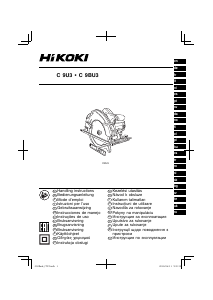


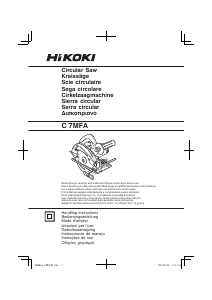
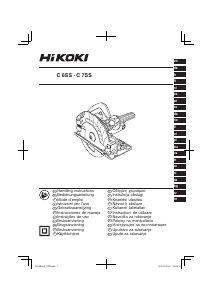
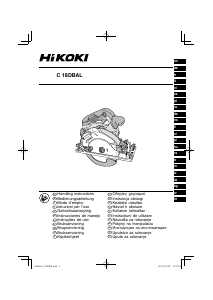
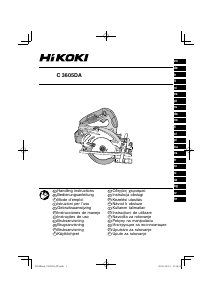
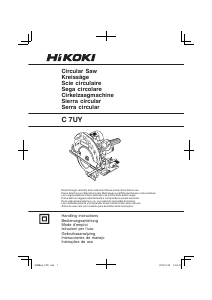
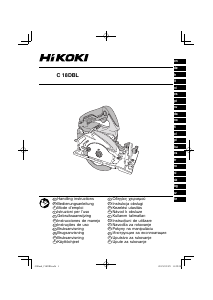
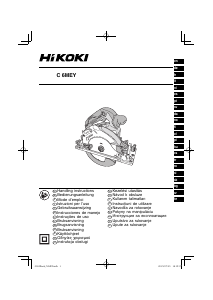
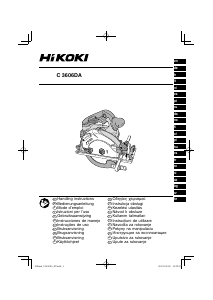
Diskutieren Sie über dieses Produkt mit
Hier können Sie uns Ihre Meinung zu Hikoki C 9U3 Kreissäge mitteilen. Wenn Sie eine Frage haben, lesen Sie zunächst das Bedienungsanleitung sorgfältig durch. Die Anforderung eines Bedienungsanleitung kann über unser Kontaktformular erfolgen.